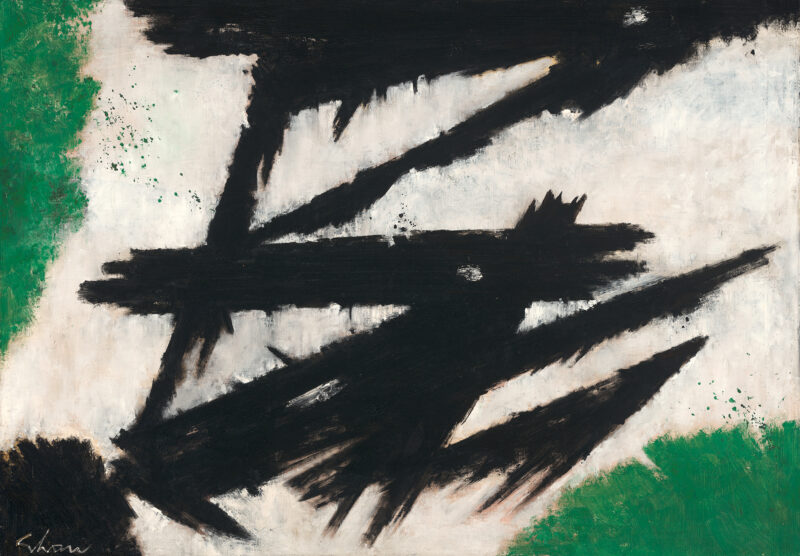
February 4th
Shaw, Charles Green
1961
Artwork Information
-
Title:
February 4th
-
Artist:
Shaw, Charles Green
-
Artist Bio:
American, 1892–1974
-
Date:
1961
-
Medium:
Oil on canvas
-
Dimensions:
40 1/4 x 57 1/4 inches
-
Credit Line:
Wichita Art Museum, Gift of Georgette Passedoit
-
Object Number:
1961.2
-
Display:
Not Currently on Display
About the Artwork
As an individual, Charles Green Shaw distilled numerous talents, including journalist, novelist, poet, author of children’s stories, organizer of artist associations, and proselytizer of modernism in the United States into an elegant package of a man, wealthy, sophisticated, and welcome in both café society and avant-garde cultural circles. He was a member of a quartet of privileged and sophisticated promoters of abstract painting known as the Park Avenue Cubists and a founder of the American Abstract Artists group. February 4th is one of two paintings in the Wichita Art Museum collection representing this important creator and promoter of American abstraction.
The aggressive zest of February 4th may surprise viewers who know Charles Green Shaw only from his delicate abstractions of the 1930s and 1940s. The latter featured simple biomorphic and geometric shapes floating serenely over flat zones of muted color. The motifs used in these earlier paintings reflected the influence of the cubist-surrealist compositions of European modernists Picasso, Gris, and Miro and the sculptural mobiles of American Alexander Calder. By the early 1960s however, Shaw had abandoned the hard edge geometry of the early 20th century to experiment with the gestural brushwork and tactile surfaces of abstract expressionism. Some critics see Shaw’s direct appropriation of the formal idiom of such divergent period styles as mannerist and derivative while others view his borrowings as a creative response to the expanding vocabulary of abstraction and the consequent enrichment of emotive/decorative expression.
In his recent monograph on Shaw, historian Henry Adams asserted that Shaw possessed an extraordinary poetic ability to distill the complex configurations of the master modernists into a kind of pictorial haiku, a concentrated expression of exquisite brevity, clarity, and psychic equilibrium. Adams’s observation is confirmed in Shaw’s 1961 piece, February 4th, in which Franz Kline’s classic black and white action painting is reborn as a weathered-looking calligraphic character, a character seemingly composed of numerous object allusions. This elegant linear black motif anchors an impressionistic color background of brilliant lime green patches and a large central area of white scumbling. Beneath the bold “flag –like color scheme” of green, white, and black,[1] the atmospheric ground permits occasional fleeting glimpses of a delicate pink edging.
[1] J.K., review of an exhibit of paintings by Charles Shaw at the Landry Gallery, NY, Artnews, April 1961, p. x.